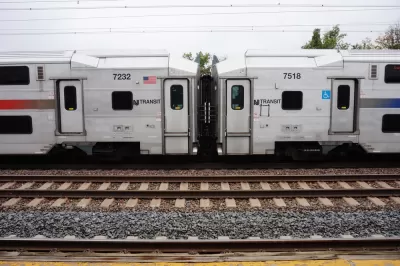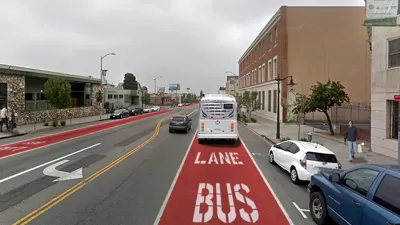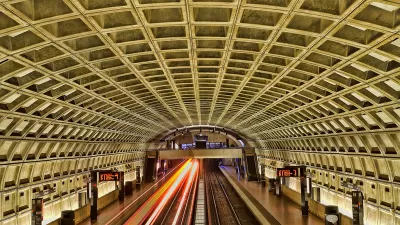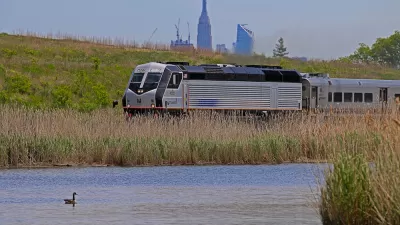The sharp historic division between commuter rail and other forms of transit has limited the ability of regional rail systems to serve more users.

Designed to serve suburban commuters, many of the country's regional rail systems don't provide efficient enough service to lure commuters out of their private vehicles, writes Jake Blumgart for Governing. "In recent decades, the vast web of rail lines that surround many older urban centers were only convenient if you worked a 9-to-5 job downtown." The stark division between "regular" transit and commuter rail in the minds of many transportation officials has left many workers with less traditional schedules without effective transit options.
"There are not such sharp contrasts between regional rail and the rest of transit systems in most wealthy European or East Asian nations. But in North America, the divide was sacrosanct. As recently as 2016, then-MBTA General Manager Frank DePaola drew a bright line between this service and the rest of the agency’s subway, bus, and light rail services: 'Commuter rail is commuter rail. It’s not transit. It’s designed to bring people into the city in the morning and take them home at night.'"
But the sharp drop in ridership during the last year has highlighted the problem with this mindset. After "commuter rail lines took a ridership hit of unprecedented magnitude," workers are slowly returning to their commutes, but "even those who go back to the office are anticipating that they will have more flexible scheduling and work-from-home opportunities a day or two a week." This means that "[i]f commuter systems try to return to their focus on white-collar suburban commuters, their ridership will be considerably thinned. To continue to attract riders and fares, they will need to change their appeal. To do that, they will need to change their frequencies and their fares."
FULL STORY: Taking the ‘Commuter’ Out of America’s Rail Systems

Study: Maui’s Plan to Convert Vacation Rentals to Long-Term Housing Could Cause Nearly $1 Billion Economic Loss
The plan would reduce visitor accommodation by 25,% resulting in 1,900 jobs lost.

North Texas Transit Leaders Tout Benefits of TOD for Growing Region
At a summit focused on transit-oriented development, policymakers discussed how North Texas’ expanded light rail system can serve as a tool for economic growth.

Why Should We Subsidize Public Transportation?
Many public transit agencies face financial stress due to rising costs, declining fare revenue, and declining subsidies. Transit advocates must provide a strong business case for increasing public transit funding.

How to Make US Trains Faster
Changes to boarding platforms and a switch to electric trains could improve U.S. passenger rail service without the added cost of high-speed rail.

Columbia’s Revitalized ‘Loop’ Is a Hub for Local Entrepreneurs
A focus on small businesses is helping a commercial corridor in Columbia, Missouri thrive.

Invasive Insect Threatens Minnesota’s Ash Forests
The Emerald Ash Borer is a rapidly spreading invasive pest threatening Minnesota’s ash trees, and homeowners are encouraged to plant diverse replacement species, avoid moving ash firewood, and monitor for signs of infestation.
Urban Design for Planners 1: Software Tools
This six-course series explores essential urban design concepts using open source software and equips planners with the tools they need to participate fully in the urban design process.
Planning for Universal Design
Learn the tools for implementing Universal Design in planning regulations.
Ascent Environmental
Borough of Carlisle
Institute for Housing and Urban Development Studies (IHS)
City of Grandview
Harvard GSD Executive Education
Toledo-Lucas County Plan Commissions
Salt Lake City
NYU Wagner Graduate School of Public Service





























